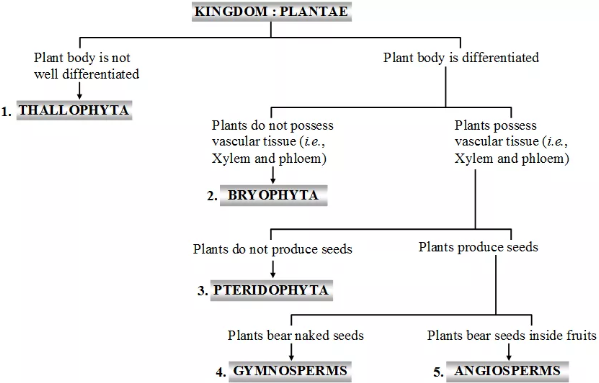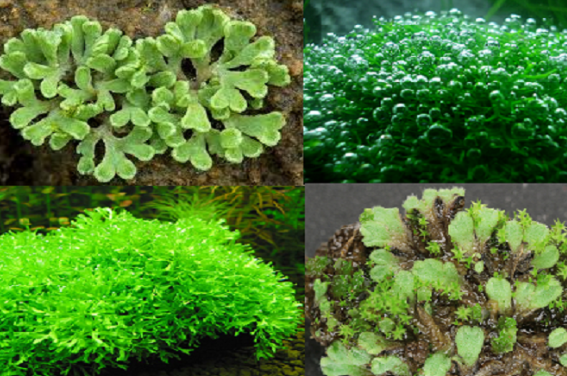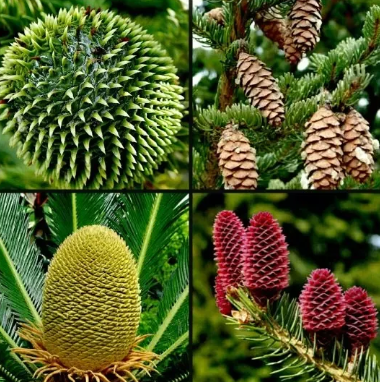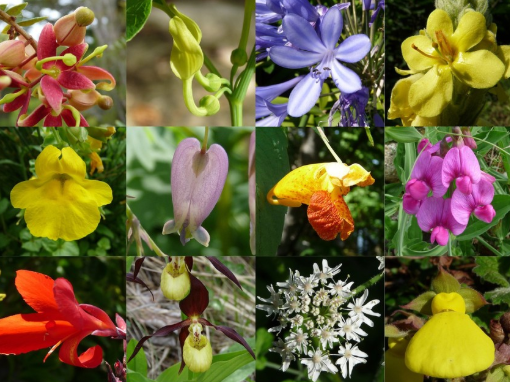Kingdom Plantae contains all plant species: mosses, ferns, algae, conifers and flowering plants. All the members are chlorophyll containing eukaryotes. The plant cells have a eukaryotic structure with prominent chloroplasts and cell wall mainly made of cellulose.
Plants : Nutrition
Majority of the plants are photoautotrophic. Using chlorophyll, they will capture light energy, which is in turn used for the manufacture of food—sugar, starch, and other carbohydrates. Chlorophyll is the pigment that imparts a green color to the plants. Chlorophyll a transfers the energy absorbed from light to the biomolecules within the plant.
A few members are partially heterotrophic such as the insectivorous plants or parasites. Bladderwort and Venus fly trap are examples of insectivorous plants and Cuscuta is a parasite
Life cycle of Plants
Plants have a unique life cycle known as Alternation of Generations. The cycle have two distinct stages –
- The diploid (2n) sporophytic phase and
- The haploid (n) gametophytic phase
These two stages alternate with each other. The time duration of each phase differs in different group of plants.
- Sporophyte generation: The sporophyte is a multicellular plant in diploid stage (2n- two sets of chromosomes). It is developed from a diploid zygote which is formed by the fertilization of haploid gametes. The sporophyte plant produces haploid spores through meiosis, that germinate into a gametophyte.
- Gametophyte generation; The gametophyte is formed from the haploid spores. Hence, it is a multicellular plant in haploid condition (n- a single set of chromosome). It produces haploid gametes (egg and sperm cells) by meiosis. In meiosis, a single cell divides into four cells that have half the genetic information of the original cell. The gametes fertilize to form a diploid zygote that develops into a sporophyte.
.
Plantae: Classification
Systematics within the Plantae is based on a number of features
- Life-cycle characteristics
- Body diffeentiation
- Presence of Vascular tissue
- Seed formation

THALLOPHYTA: Algae
Algae are the sole members of this group. They have chlorophyll, and shows alternation of generation. They have a thalloid structure, devoid of any distinct body parts. Algae are usually found in aquatic systems, and moist habitats. Some are also found in association with fungi (called lichen) and animals


Algae Bryophytes
Non- Vascular: BRYOPHYTES
Bryophytes include mosses, liverworts, and hornworts. They are nonvascular plants and emerged after algae. Since xylem and phloem are absent, they also don’t have true roots, stems, or leaves. Some members possess rhizoids. They look like little roots, but are not absorptive. They are used to anchor the plants to a substrate.
They are usually found in moist environments, and they are typically low to the ground, due to the absence of a vascular system to transport water. In the bryophytes the sporophyte plant is very small and depends on the parent gametophyte for its entire life
Seedless Vascular: PTERIDOPHTES
Pteridophytes include club mosses, whisk ferns, horsetails, and ferns. They have true leaves, stems, and roots. The sporophyte is a large free-living and independent organism, and it is the dominant phase in the life cycle. The gametophyte generation is free-living but very small.

Seed Plants: Gymnosperms and Angiosperms
This group contains plants that produce seeds.
The spermatophytes produce two distinct types of spore producing structures, and therefore two distinct types of spores: microspores and megaspores. The microspores develop into pollen, or the male gametophyte. The megaspore develops into the egg, or the female gametophyte.
The egg and sperm fuse to form a zygote that develops into an embryo, which is protected inside several layers and wrapped in a protective coat. This structure forms the seed of the plant. Hence, sporophyte is the dominant stage, and the gametophyte is the smaller and dependent generation.
Seed plants are divided into two major groups.
Seed naked: GYMNOSPERMS
Gymnosperms include conifers, cycads and ginkos. Since they do not have any fruits or flowers, they rely completely on wind for pollination.
Seed enclosed: ANGIOSPERMS
Angiosperms possess flowers and fruits. Flowers attract pollinators to transport their pollen. Seeds are found inside the fruits. Since fruits are sweet, fleshy and delicious, animals and birds eat them, and disperse the seeds to new habitats.


Gymnosperms Angiosperms
